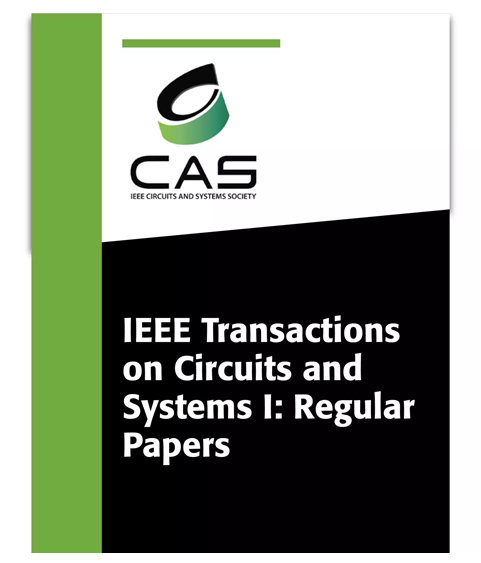Modeling and Predicting Noise-Induced Failure Rates in Ultra-Low-Voltage SRAM Bitcells Affected by Process Variations
IF 5.2
1区 工程技术
Q1 ENGINEERING, ELECTRICAL & ELECTRONIC
IEEE Transactions on Circuits and Systems I: Regular Papers
Pub Date : 2025-01-10
DOI:10.1109/TCSI.2024.3525387
引用次数: 0
Abstract
Stability of ultra-low-voltage SRAM bitcells in retention mode is threatened by two types of uncertainty: process variability and intrinsic noise. While variability dominates the failure probability, noise-induced bit flips in weakened bitcells lead to dynamic instability. We study both effects jointly in a unified SPICE simulation framework. Starting from a synthetic representation of process variations introduced in a previous work, we identify the cases of poor noise immunity that require thorough noise analyses. Relying on a rigorous and systematic methodology, we simulate them in the time domain so as to emulate a true data retention operation. Short times to failure, unacceptable for a practical ultra-low-power memory system application, are recorded. The transient bit-flip mechanism is analyzed and a dynamic failure criterion involving the unstable steady state is established. We conclude that, beyond static variability, the dynamic noise inflates defectiveness among SRAM bitcells. Then, a stochastic nonlinear model, fully characterizable from conventional deterministic SPICE simulations, is presented. We then leverage it to efficiently and accurately predict the mean time to failure with an analytical Eyring-Kramers formula, recently extended to account for the varying-noise behavior of nonlinear systems.受工艺变化影响的超低电压SRAM位元噪声诱发故障率建模与预测
超低电压SRAM位元在保持模式下的稳定性受到两种不确定性的威胁:工艺变异性和固有噪声。虽然可变性主导了失效概率,但在弱位元中由噪声引起的位翻转会导致动态不稳定。我们在一个统一的SPICE模拟框架中共同研究了这两种效应。从先前工作中介绍的过程变化的综合表示开始,我们确定了需要彻底噪声分析的噪声抗扰性差的情况。依靠严格和系统的方法,我们在时域中模拟它们,以模拟真正的数据保留操作。短时间的故障,不可接受的实际超低功耗存储系统应用,记录。分析了瞬态比特翻转机理,建立了包含不稳定稳态的动态失效判据。我们得出的结论是,除了静态可变性,动态噪声膨胀了SRAM位元之间的缺陷。然后,提出了一个随机非线性模型,该模型完全可以从传统的确定性SPICE模拟中表征。然后,我们利用它来有效和准确地预测平均失效时间与分析Eyring-Kramers公式,最近扩展到考虑非线性系统的变噪声行为。
本文章由计算机程序翻译,如有差异,请以英文原文为准。
求助全文
约1分钟内获得全文
求助全文
来源期刊
CiteScore
9.80
自引率
11.80%
发文量
441
审稿时长
2 months
期刊介绍:
TCAS I publishes regular papers in the field specified by the theory, analysis, design, and practical implementations of circuits, and the application of circuit techniques to systems and to signal processing. Included is the whole spectrum from basic scientific theory to industrial applications. The field of interest covered includes: - Circuits: Analog, Digital and Mixed Signal Circuits and Systems - Nonlinear Circuits and Systems, Integrated Sensors, MEMS and Systems on Chip, Nanoscale Circuits and Systems, Optoelectronic - Circuits and Systems, Power Electronics and Systems - Software for Analog-and-Logic Circuits and Systems - Control aspects of Circuits and Systems.

 求助内容:
求助内容: 应助结果提醒方式:
应助结果提醒方式:


